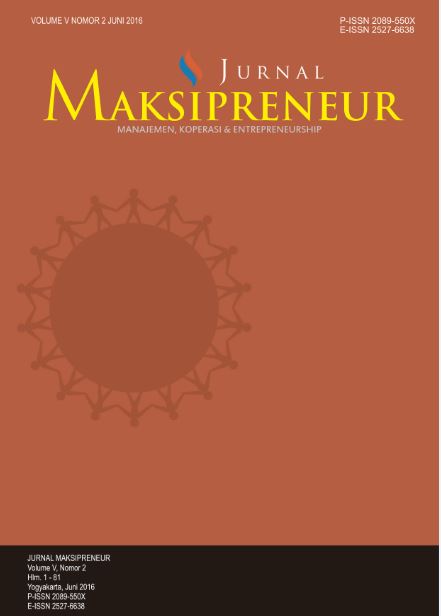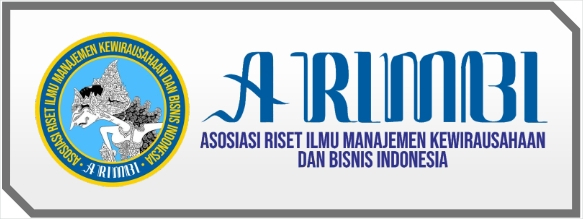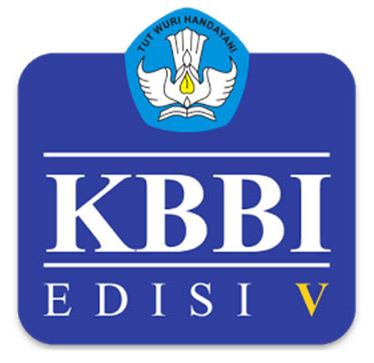Analysis of Factors Affecting Behavioral Intention in Using Mobile Wallets in Batam City
DOI:
https://doi.org/10.30588/jmp.v12i2.1163Keywords:
Behavioral Intention, Mobile Wallets, Perceived Ease of Use, Perceived Usefulness, TrustAbstract
This study aims to determine the effect between perceived risk, self-efficacy, enjoyment, trust, perceived usefulness, and perceived ease of use on behavioral intention to use mobile wallets in Batam City. Therefore, the researcher use judgemental sampling in order to give the questionnaire to users who have made transactions using Go-Pay, OVO, Dana, Shopee, and Link Aja in Batam City, by using a google form that was distributed to 375 respondents. The results of these respondents will be processed using smartPLS version 3.0 software. The results of this study indicate trust and self-efficacy, do not at all affect behavioral intention to use mobile wallets in Batam City. In addition, trust is also unable to mediate the effect between enjoyment and behavioral intention to use mobile wallets in Batam City.References
Al-Emran, M., Al-Maroof, R., Al-Sharafi, M. A., & Arpaci, I. (2020). What Impacts Learning with Wearables? An Integrated Theoretical Model. Interactive Learning Environments, 30(10), 1897–1917. https://doi.org/10.1080/10494820.2020.1753216.
Al-Saedi, K., Al-Emran, M., Ramayah, T., & Abusham, E. (2020). Developing a General Extended UTAUT Model for M-payment Adoption. Technology in Society, 62(C), 101293. https://doi.org/10.1016/j.techsoc.2020.101293.
Bank Indonesia (2018). Peraturan Bank Indonesia Nomor 20/6/PBI/2018 tentang Uang Elektronik. https://www.bi.go.id/id/publikasi/peraturan/Pages/PBI-200618.aspx.
Bank Indonesia (2020a). Apa itu Uang Elektronik. https://www.bi.go.id/id/edukasi/Pages/Apa-itu-Uang-Elektronik.aspx.
Bank Indonesia (2020b). Evolusi Sistem Pembayaran. https://www.bi.go.id/id/fungsi-utama/sistem-pembayaran/default.aspx.
Bashir, I., & Madhavaiah, C. (2015). Trust, Social Influence, Self‐Efficacy, Perceived Risk and Internet Banking Acceptance: An Extension of Technology Acceptance Model in Indian Context. Metamorphosis: A Journal of Management Research, 14(1), 25–38. https://doi.org/10.1177/0972622520150105.
Bashir, I., & Madhavaiah, C. (2015). Consumer attitude and behavioral intention towards Internet banking adoption in India. Journal of Indian Business Research, 7(1), 67–102. https://doi.org/10.1108/JIBR-02-2014-0013.
Chen, L., & Aklikokou, A. K. (2020). Determinants of E-government Adoption: Testing the Mediating Effects of Perceived Usefulness and Perceived Ease of Use. International Journal of Public Administration, 43(10), 850–865. https://doi.org/10.1080/01900692.2019.1660989.
Christiarini, R., & Rahmadilla, A. (2021). Analisis Faktor-faktor yang Mempengaruhi Purchase Intention Skincare Korea Mahasiswa Kota Batam. Journal of Global Business and Management Review, 3(2), 29–39.
Chunxiang, L. (2014). Study on Mobile Commerce Customer Based on Value Adoption. Journal of Applied Sciences, 14(9), 901–909. https://doi.org/10.3923/jas.2014.901.909.
Good News From Indonesia (2022). Ketahui 5 Dompet Digital Paling Banyak Digunakan di Indonesia 2021. https://www.goodnewsfromindonesia.id/2021/11/24/ketahui-5-dompet-digital-paling-banyak-digunakan-di-indonesia-2021.
Hair, J. F., Hult, G. T., Ringle, C., & Sarstedt, M. (2017). A Primer on Partial Least Squares Structural Equation Modeling (PLS-SEM) - Joseph F. Hair, Jr., G. Tomas M. Hult, Christian Ringle, Marko Sarstedt. In Sage (Second). SAGE.
Hair, J. F., Risher, J. J., Sarstedt, M., & Ringle, C. M. (2019). When to Use and How to Report the Results of PLS-SEM. European Business Review, 31(1), 2–24. https://doi.org/10.1108/EBR-11-2018-0203.
Hallem, A. P. Y., Abbes, A. P. I., Hikkerova, P. L., & Taga, M. P. N. (2021). A Trust Model for Collaborative Redistribution Platforms: A Platform Design Issue. Technological Forecasting and Social Change, 120, https://doi.org/10.1016/j.techfore.2021.120943.
Joseph F. Hair, J., Black, W. C., Babin, B. J., & Anderson, R. E. (2019). Multivariate Data Analysis (8th ed.). New York, USA: Prentice-Hall, Inc.
Kata Data (2022). Bank Indonesia: Transaksi Uang Elektronik RI Tembus Rp 35 Triliun per Desember 2021. https://databoks.katadata.co.id/datapublish/2022/01/31/bank-indonesia-transaksi-uang-elektronik-ri-tembus-rp-35-triliun-per-desember-2021.
Kim, B., & Kim, D. (2020). Exploring the Key Antecedents Influencing Consumer’s Continuance Intention toward Bike-Sharing Services: Focus on China. International Journal of Environmental Research and Public Health, 17(12), 1–14. https://doi.org/10.3390/ijerph17124556.
Kim, S. H., Song, M. K., & Shim, C. (2020). Storytelling by Medical Tourism Agents and Its Effect on Trust and Behavioral Intention. Journal of Travel and Tourism Marketing, 37(6), 679–694. https://doi.org/10.1080/10548408.2020.1795046.
Koenig-Lewis, N., Marquet, M., Palmer, A., & Zhao, A. L. (2015). Enjoyment and Social Influence: Predicting Mobile Payment Adoption. Service Industries Journal, 35(10), 537–554. https://doi.org/10.1080/02642069.2015.1043278.
Kontan (2022). BI Catat Transaksi Uang Elektronik Senilai Rp 305,4 triliun Sepanjang 2021. https://keuangan.kontan.co.id/news/bi-catat-transaksi-uang-elektronik-senilai-rp-3054-triliun-sepanjang-2021.
Kumar, J. A., Bervell, B., Annamalai, N., & Osman, S. (2020). Behavioral Intention to Use Mobile Learning: Evaluating the Role of Self-efficacy, Subjective Norm, and Whatsapp Use Habit. IEEE Access, 8, 208058–208074. https://doi.org/10.1109/ACCESS.2020.3037925.
Liu, Y., Gan, Y., Song, Y., & Liu, J. (2021). What Influences the Perceived Trust of a Voice-enabled Smart Home System: An Empirical Study. Sensors, 21(6), 1–22. https://doi.org/10.3390/s21062037.
Media Center Batam (2020). Transaksi Non Tunai Meningkat Selama Pandemi Covid-19. https://mediacenter.batam.go.id/2020/06/25/transaksi-non-tunai-meningkat-selama-pandemi-covid-19/.
Media Indonesia (2021). COVID-19 Mewabah, WHO Sarankan Transaksi Digital. Media Indonesia. https://mediaindonesia.com/weekend/296138/covid-19-mewabah-who-sarankan-transaksi-digital.
Mehmet Haluk Koksal. (2016). The intentions of Lebanese Consumers to Adopt Mobile Banking. International Journal of Bank Marketing, 34(3), 327–346. https://doi.org/http://dx.doi.org/10.1108/IJBM-03-2015-0025
Merdeka, R. (2021). Jumlah Konsumen Dompet Digital Melonjak Pengguna Butuh Jaminan Transaksi Dan Simpanan. Rm.Id. https://rm.id/baca-berita/nasional/80885/jumlah-konsumen-dompet-digital-melonjak-pengguna-butuh-jaminan-transaksi-dan-simpanan.
Patten, M. L., & Newhart, M. (2018). Understanding Research Methods. In Understanding Research Methods (10th ed.). https://doi.org/10.4324/9781315213033
Purwianti, L. (2022). The Influence of Halal Awareness, E-WOM towards Intention to Buy Halal Cosmetics: The Role of Mediation Attitude. Journal of Business Studies and Management Review, 5(2), 281–287. https://doi.org/10.22437/jbsmr.v5i2.17693.
Putra, E. Y. (2021). Instant Shopping – Millennial User in Batam City During Covid-19 Pandemic Services. Jurnal Riset Bisnis dan Manajemen, 14(1), 1–6. https://doi.org/10.23969/jrbm.v14i2.3558.
Saprikis, V. (2018). Examining Behavioral Intention towards Social Commerce: An Empirical Investigation in University Students. Proceedings of the 32nd International Business Information Management Association Conference, IBIMA 2018 - Vision 2020: Sustainable Economic Development and Application of Innovation Management from Regional Expansion to Global Growth, 831–843.
Saprikis, V., & Markos, A. (2018). Modeling Users’ Acceptance of Social Commerce. International Journal of E-Business Research, 14(4), 28–50. https://doi.org/10.4018/IJEBR.2018100102.
Saprikis, V., Markos, A., Zarmpou, T., & Vlachopoulou, M. (2018). Mobile Shopping Consumers’ Behavior: An Exploratory Study and Review. Journal of Theoretical and Applied Electronic Commerce Research, 13(1), 71–90. https://doi.org/10.4067/S0718-18762018000100105.
Schlaegel, C. (2015). Understanding Individuals’ Initial and Continue Use Online Auction Marketplace. Management Research Review, 38(8), 855–907. https://doi.org/http://dx.doi.org/10.1108/MRR-09-2013-0210.
Sekaran, U., & Bougie, R. (2016). Research Methods for Business. In Wiley (7th ed.). https://doi.org/10.1007/978-94-007-0753-5_102084.
Seo, K. H., & Lee, J. H. (2021). The Emergence of Service Robots at Restaurants: Integrating Trust, Perceived Risk, and Satisfaction. Sustainability (Switzerland), 13(8). https://doi.org/10.3390/su13084431.
Suhartanto, D. (2019). Predicting Behavioural Intention toward Islamic Bank: A Multi-group Analysis Approach. Journal of Islamic Marketing, 10(4), 1091–1103. https://doi.org/10.1108/JIMA-02-2018-0041.
Tao, D., Fu, P., Wang, Y., Zhang, T., & Qu, X. (2019). Key Characteristics in Designing Massive Open Online Courses (MOOCs) for User Acceptance: An Application of the Extended Technology Acceptance Model. Interactive Learning Environments, 1–14. https://doi.org/10.1080/10494820.2019.1695214.
Tempo (2022). Hacker Bobol Data 10 Juta Pelanggan Telekomunikasi Australia. https://dunia.tempo.co/read/1638773/hacker-bobol-data-10-juta-pelanggan-telekomunikasi-australia.
To, A. T., & Trinh, T. H. M. (2021). Understanding Behavioral Intention to Use Mobile Wallets in Vietnam: Extending the TAM Model with Trust and Enjoyment. Cogent Business and Management, 8(1). https://doi.org/10.1080/23311975.2021.1891661.
Wu, W., Wu, Y. J., & Wang, H. (2021). Perceived City Smartness Level and Technical Information Transparency: The Acceptance Intention of Health Information Technology during a Lockdown. Computers in Human Behavior, 122(March), 106840. https://doi.org/10.1016/j.chb.2021.106840.
Ye, S., Ying, T., Zhou, L., & Wang, T. (2019). Enhancing Customer Trust in Peer-to-peer Accommodation: A “Soft” Strategy via Social Presence. International Journal of Hospitality Management, 79, 1–10. https://doi.org/10.1016/j.ijhm.2018.11.017.
Zhai, N., & Ma, X. (2021). Automated Writing Evaluation (AWE) Feedback: A Systematic Investigation of College Students’ Acceptance. Computer Assisted Language Learning, 0(0), 1–26. https://doi.org/10.1080/09588221.2021.1897019.
Zhang, X., Liu, S., Wang, L., Zhang, Y., & Wang, J. (2020). Mobile Health Service Adoption in China: Integration of Theory of Planned Behavior, Protection Motivation Theory, and Personal Health Differences. Online Information Review, 44(1), 1–23. https://doi.org/10.1108/OIR-11-2016-0339.
Downloads
Additional Files
Published
How to Cite
Issue
Section
License
Authors who publish with Jurnal Maksipreneur agree to the following terms:
Authors retain copyright and grant the Jurnal Maksipreneur right of first publication with the work simultaneously licensed under a Creative Commons Attribution 4.0 International License that allows others to share (copy and redistribute the material in any medium or format) and adapt (remix, transform, and build upon the material) the work for any purpose, even commercially with an acknowledgment of the work's authorship and initial publication in Jurnal Maksipreneur.
Authors are able to enter into separate, additional contractual arrangements for the non-exclusive distribution of the journal's published version of the work (e.g., post it to an institutional repository or publish it in a book), with an acknowledgment of its initial publication in Jurnal Maksipreneur. Authors are permitted and encouraged to post their work online (e.g., in institutional repositories or on their website) prior to and during the submission process, as it can lead to productive exchanges, as well as earlier and greater citation of published work (See The Effect of Open Access).























